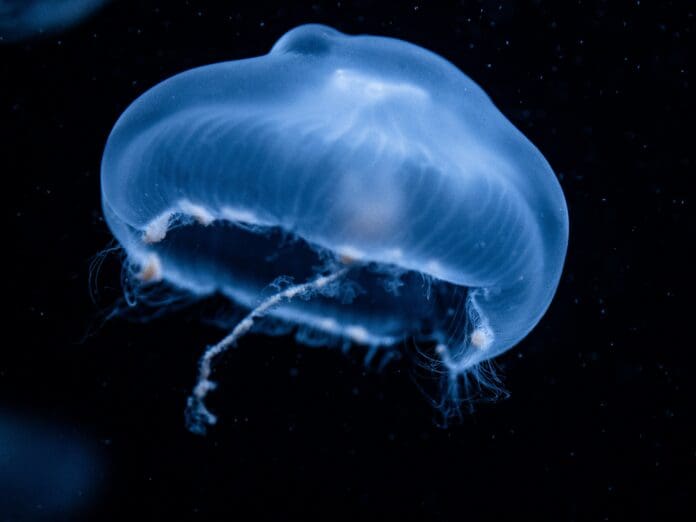This post is also available in:
 עברית (Hebrew)
עברית (Hebrew)
Chinese researchers have unveiled a new biomimetic underwater robot designed to operate almost invisibly beneath the surface. Modelled after a jellyfish, the transparent robot moves with lifelike grace, using soft materials and fluid motion to avoid detection by sonar and optical sensors.
Developed at Northwestern Polytechnical University in Xi’an, the device represents a significant step in underwater robotics, particularly for missions requiring quiet, low-energy, and unobtrusive operation. With a diameter of just 12 cm and weighing around 56 grams, the compact robot combines stealth and mobility, allowing it to move undisturbed through sensitive marine environments.
The jellyfish robot is powered by an electrostatic hydraulic actuator, a mechanism that replicates how real jellyfish contract and expand their bell to swim. Instead of relying on motors or propellers, the actuator produces rhythmic pulses that push water gently behind it, creating forward motion without the noise or turbulence typical of mechanical systems. The robot consumes just 28.5 milliwatts of power, a fraction of what traditional underwater vehicles require, making it both efficient and sustainable for long-term use.
According to Interesting Engineering, constructed from a specially formulated hydrogel electrode, the robot’s flexible body and translucent materials enhance its ability to blend with the surrounding water. This makes it particularly suitable for environmental monitoring, marine research, and potentially covert reconnaissance where stealth and precision are critical.
Equipped with a miniature camera and onboard AI chip, the system can autonomously identify underwater targets and navigate complex conditions using machine learning. During demonstrations broadcast on China’s CCTV, the robot was shown hovering steadily in moving water and recognizing objects such as university emblems and marine life—tasks that highlight its visual and adaptive capabilities.
The project is part of a broader push in China’s bioinspired robotics, which explores natural movement patterns to improve performance and reduce noise in robotic systems. Alongside robotic birds, geckos, and fish, this jellyfish-like design suggests a future where underwater monitoring and surveillance could be carried out silently, efficiently, and with minimal disruption to marine ecosystems.
The press release can be found here.


























